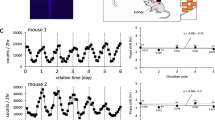Abstract
In laboratory animals, histology is most commonly used to study doxorubicin-induced cardiotoxicity. However, for monitoring during treatment, large numbers of animals are needed. Recently we developed a new method to measure ECG values in freely moving mice by telemetry. With this model we investigated the effect of chronic doxorubicin administration on the ECG of freely moving BALB/c mice and the efficacy of ICRF-187 as a protective agent. The ST interval significantly widened from 15.0±1.5 to 56.8±11.8 ms in week 10 (7 weekly doses of 4 mg/kg doxorubicin given i.v. plus 3 weeks of observation). The ECG of the control animals did not change during the entire study. After sacrifice the hearts of doxorubicin-treated animals were enlarged and the atria were hypertrophic. As this schedule exerted more toxicity than needed to investigate protective agents, the protection of ICRF-187 was determined using a dose schedule with lower general toxicity (6 weekly doses of 4 mg/kg doxorubicin given i.v. plus 2 weeks of observation). On this schedule, the animals’ hearts appeared normal after sacrifice and ICRF-187 (50 mg/kg given i.p. 1 h before doxorubicin) provided almost full protection. These data were confirmed by histology. The results indicate that this new model is very sensitive and enables monitoring of the development of cardiotoxicity with time. These findings result in a model that allows the testing of protectors against doxorubicin-induced cardiotoxicity as demonstrated by the protection provided by ICRF-187.
Similar content being viewed by others
Author information
Authors and Affiliations
Additional information
Received: 7 April 1995/Accepted: 14 September 1995
Rights and permissions
About this article
Cite this article
van Acker, S., Kramer, K., Voest, E. et al. Doxorubicin-induced cardiotoxicity monitored by ECG in freely moving mice A new model to test potential protectors. Cancer Chemother Pharmacol 38, 95–101 (1996). https://doi.org/10.1007/s002800050453
Issue Date:
DOI: https://doi.org/10.1007/s002800050453




